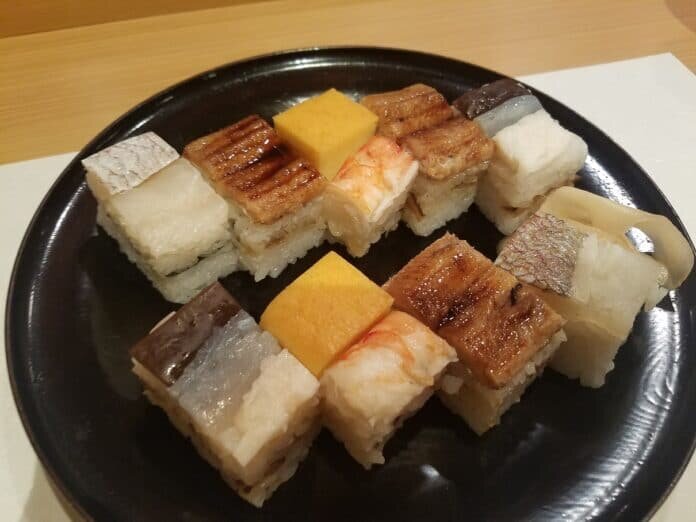
Table of Contents
What is Hakozushi?
Hakozushi is a traditional take on the regular nigiri sushi. It is compressed in a wooden box (oshibako), creating a compact, beautifully sculptured piece of sushi. The chef lines the bottom of the oshibako with the desired topping. After, it is then filled with sushi rice and pressed with the lid. Next, it is cut into bite size pieces. Compared to the regular hand pressed nigiri sushi, the ingredients used are pre seasoned so it can be eaten as it is. Raw fish is never used and instead, boiled or cured foods. Furthermore, it can be taken home to eat at a later time.
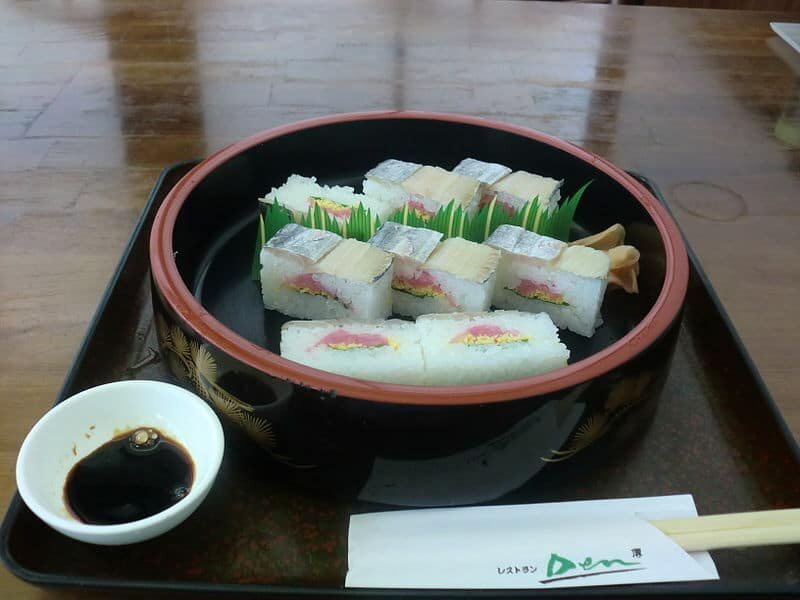
History of Hakozushi
In the 19th century, a small shop in Osaka’s Senba district, called Yoshino Zushi, developed hakozushi. Yoshino Torazo developed the nigiri sushi into a work of art. Yoshino created beautiful, symmetrically shaped sushi with various seafood and vegetables. This technique has been passed down to Oyama Yuichi, the present owner of Yoshino Zushi.
Oyama Yuichi further developed hakozushi by adding more elements in between the rice. He placed rice, only half full into the oshibako and then layered thinly sliced shiitake mushrooms on top. He often used toasted seaweed, depending on the topping. After, more sushi rice was placed on top and moulded into the beautiful pressed hakozushi. It resembled that of a sushi sandwich and is a work of art. The elegance and presentation of hakozushi has now turned into a fashionable present as well as being able to eat at select restaurants.
How to make Sushi Rice
Rice is the key ingredient in hakozushi, therefore, meticulous preparation is needed. Sushi rice is Japanese short grain rice with rice wine vinegar. Do not get confused when supermarkets say their rice is ‘Sushi rice’ as it will not have any vinegar added.
The kanji for sushi actually means ‘sour flavor’, hence the use of vinegar. In Japan, people used to conserve fish by wrapping it in fermented rice. This was then thrown away once the fish was consumed. However, to reduce waste, vinegar was added to the rice, which could then be consumed. The vinegar seasoned the rice as well as balancing with the meatiness of the fish. Although we have refrigerators to help with preserving ingredients, vinegar has never been lost in sushi rice. The umami and punch it gives to the sushi is the perfect match.
Ingredients
3 rice cups of rice
Water
5 cm konbu
85ml rice wine vinegar
40g sugar
10g salt
Method
Step 1
Firstly, measure out the rice in a bowl and rinse with cold water. Keep rinsing until the water comes off clear. Then soak the rice in cold water for 30 minutes.
Step 2
After 30 minutes, place the rice in the rice cooker and then fill with water till the ‘3 cup line’. Place the piece of konbu inside the rice cooker. After, boil the rice.
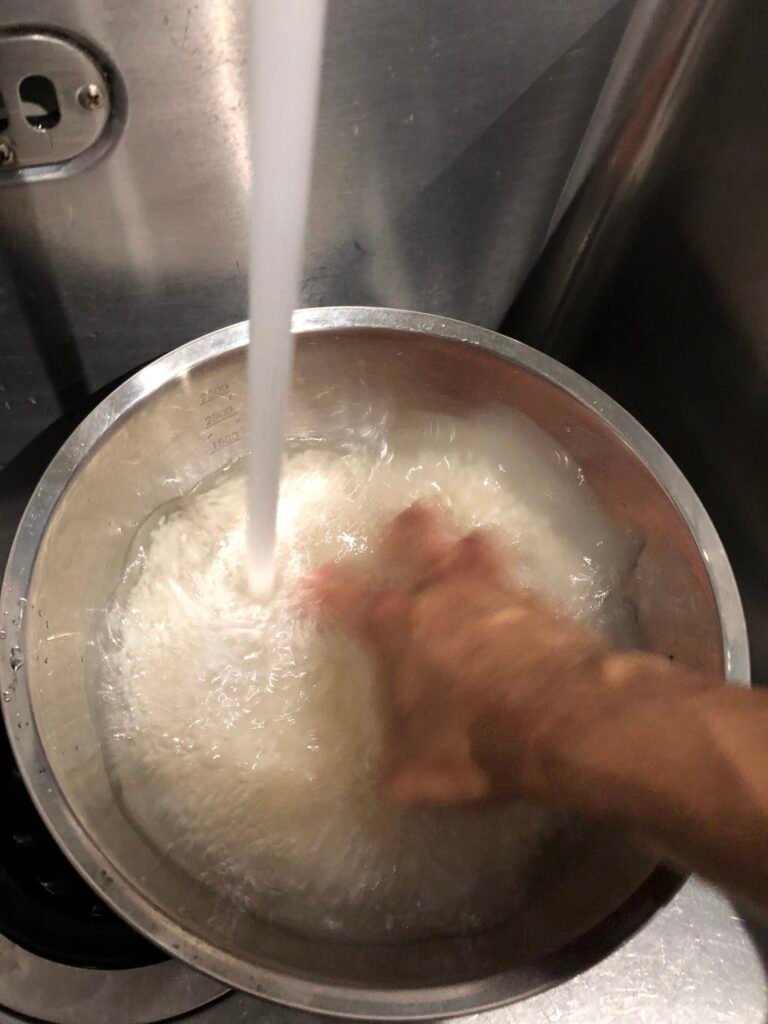
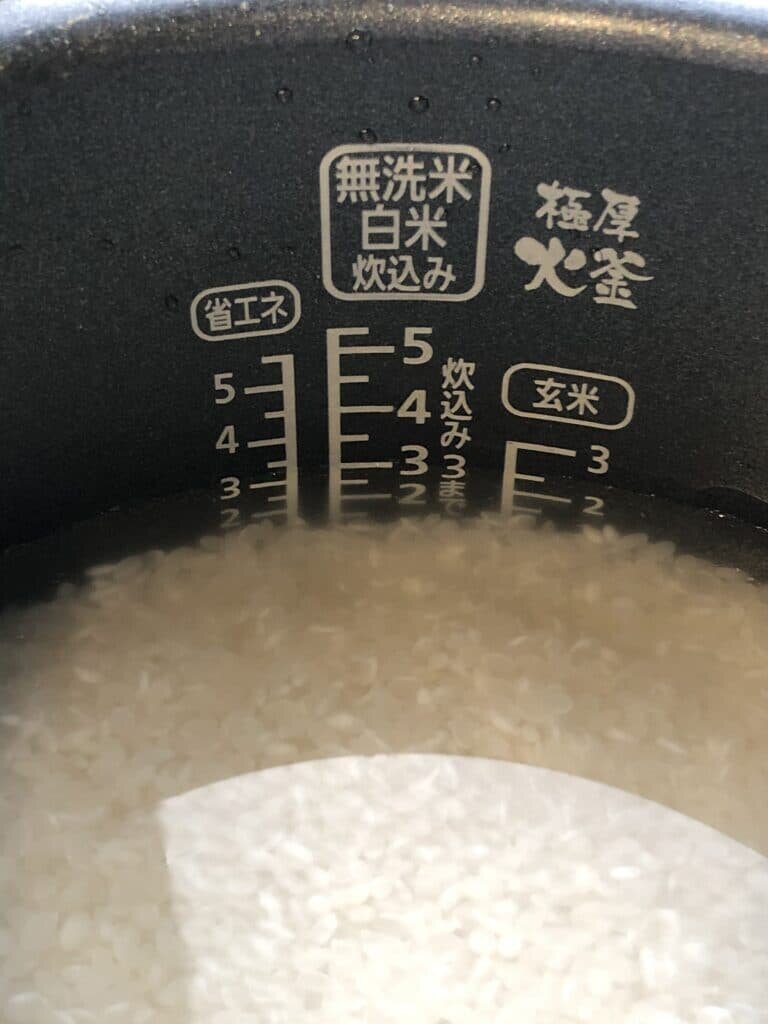
Step 3
While the rice boiling, mix the vinegar, sugar and salt in a bowl.
Step 4
After, the rice is boiled, place in a large, flat container. Usually a round, flat-bottom wooden tub, called a sushi oke/hangiri. I used a large saucepan! Add the sushi mixture and then use cutting motions to mix and cool down the rice.
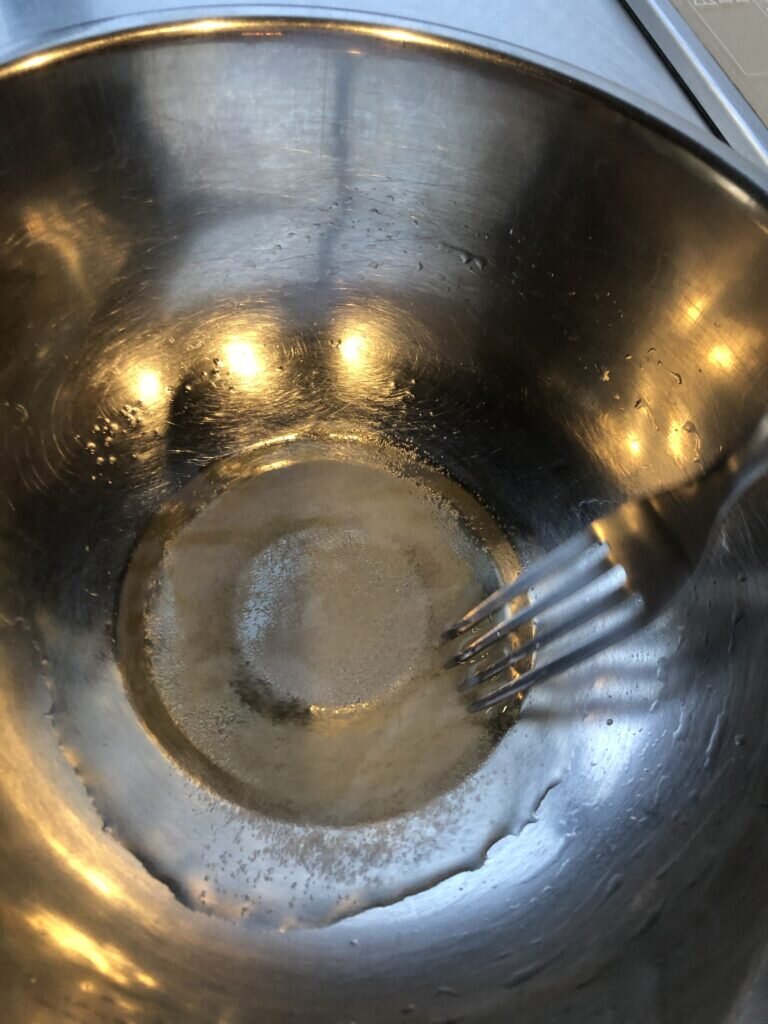
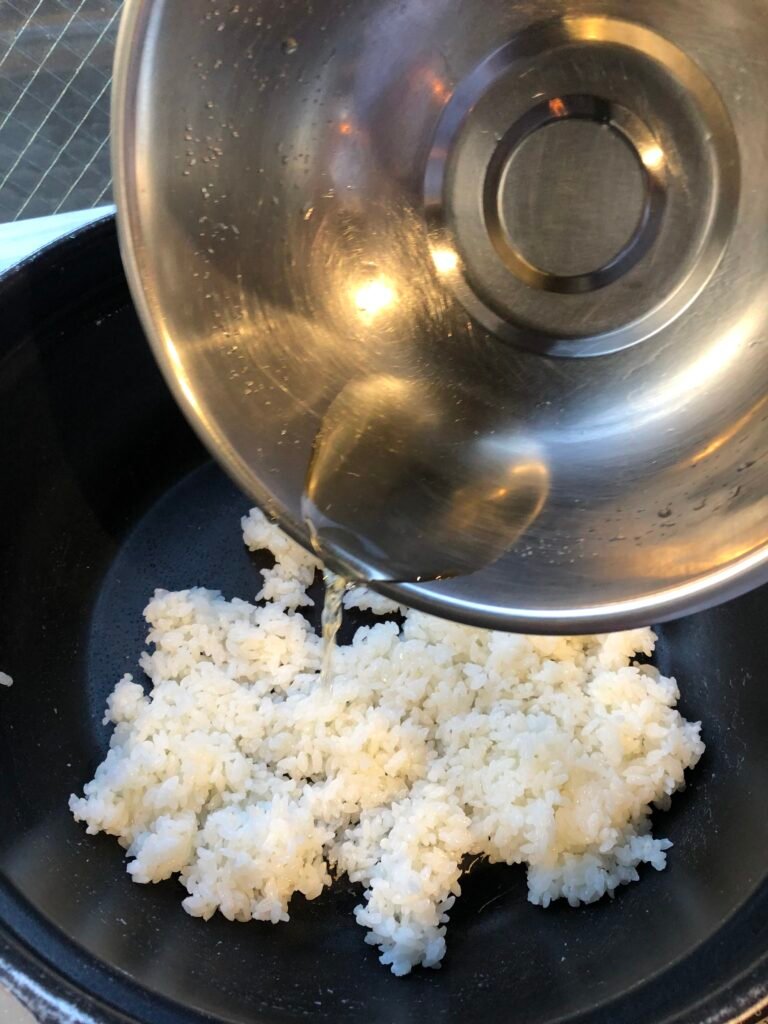
You can keep it covered with a damp towel until it is ready to use.
Toppings
| Tamagoyaki | Mackerel Fish / Boiled Prawns |
Here is where you can get creative. Traditionally sliced fish was used, such as mackerel. However, in recent times, the skill of making hakozushi has been declining, due to the time and effort compared to regular sushi. It is a traditional technique, which dates back centuries and is now seen more of a luxury kind of sushi. Higher grades of fish are used such as red snapper and anago (conger eel). You can find them at select restaurants but also in some specialised souvenir stores.
You will find these high end selection of fish used in restaurants, however if you are at home, you can use whatever you like! Some other traditional toppings used are tamagoyaki (japanese omlette) and boiled shrimp.
How to make Tamagoyaki
Tamagoyaki is a sweet and savoury omlette often enjoyed in a Japanese breakfast or in a bento box. It involves making several thin omlettes, which are then rolled into a log and sliced to serve. It may look difficult to make but it is easily achievable for any home cook! One of the most common variations is called dashi tamagoyaki. Dashi is a japanese soup stock made from dried kelp (konbu) and shaved bonito flakes (katsuoboshi). The resulting flavour is an umami packed omlette with a silky and juicy omlette. To balance the umami punch, sugar is used to balance, therefore lightening the flavour.
Tamagoyaki requires a special rectangular pan to help create that box like shape. If you do not have that rectangular pan, you can use any ordinary non stick pan! The flavour will still be the same, just the shape will be different.
Firstly, you beat the eggs and mix with sugar, soy sauce, mirin and dashi. My typical recipe includes:
Ingredients
3 large eggs
5 tsp dashi
2 tsp sugar
1 tsp soy
1 tsp mirin
Method
Step 1
Start by heating the pan on a medium heat for one minute. Place oil in a bowl and fold a tissue to use for adding oil to the pan.
Step 2
When the pan is heated, add oil to the pan so it is all covered. Then add the whisked eggs so the bottom of the pan is covered. Mix gently and poke any air bubbles that form. This will help in folding and creating a tight form.
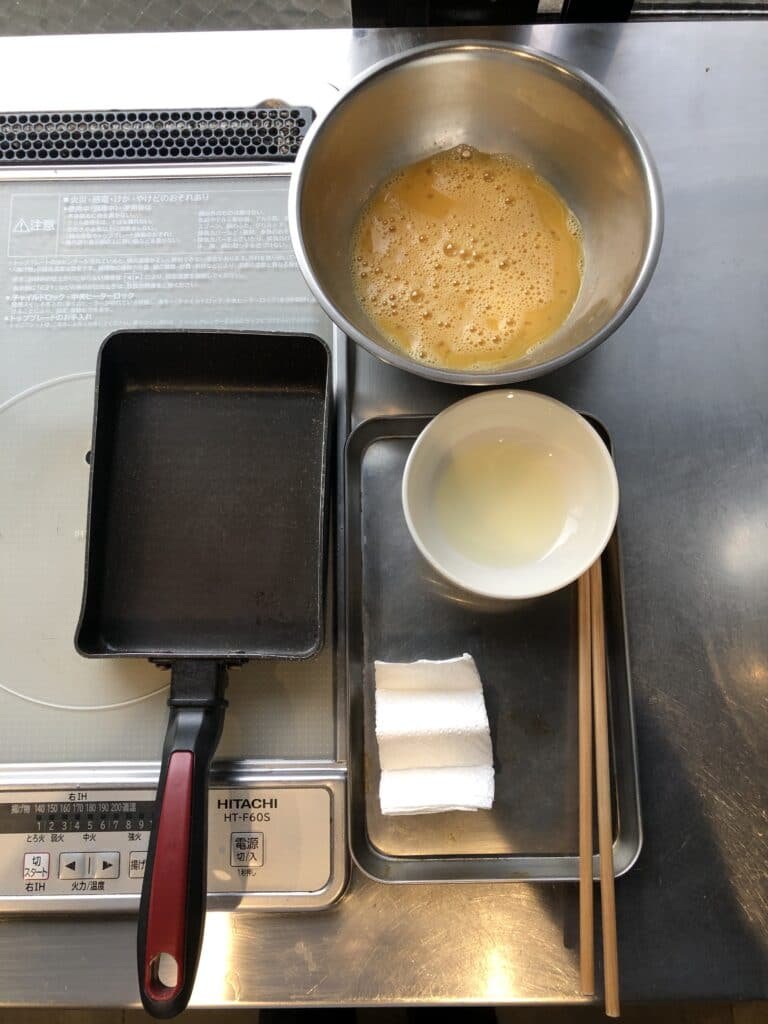
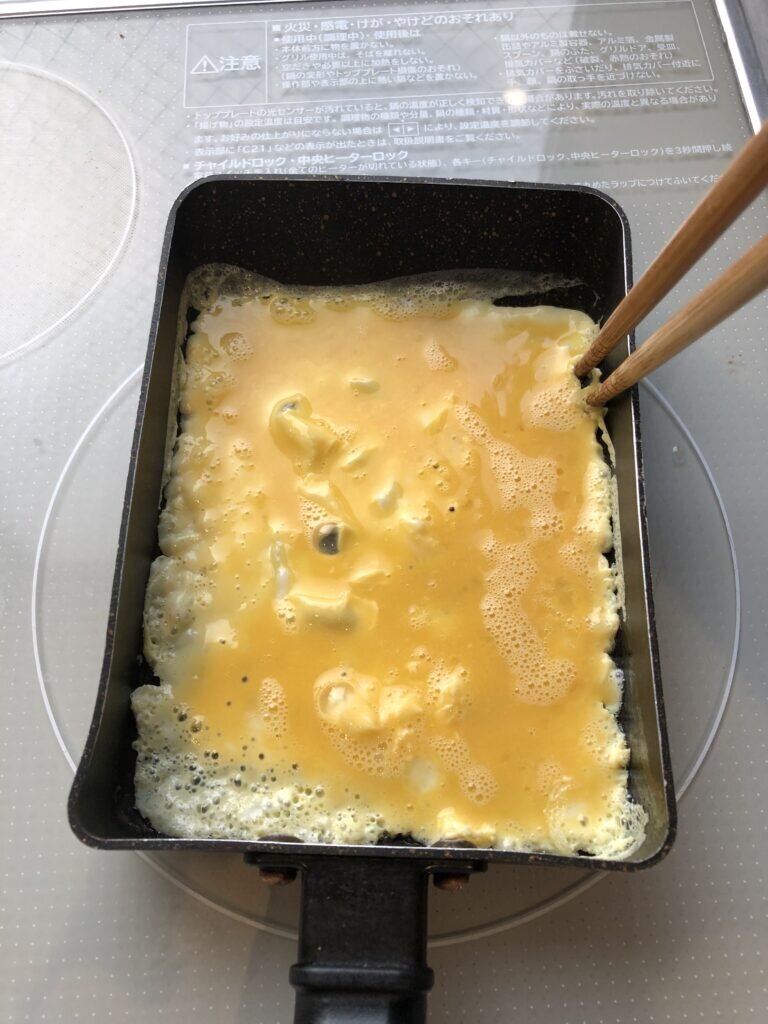
Step 3
Once the bottom is cooked and the top is slightly hardened, use chopstick to roll to the bottom of the pan. Do not worry if it’s messy, the first few rolls are not too important!
Step 4
Add more oil to the top of the pan and then push the eggs to the top. After, spread more oil to the bottom of the pan.
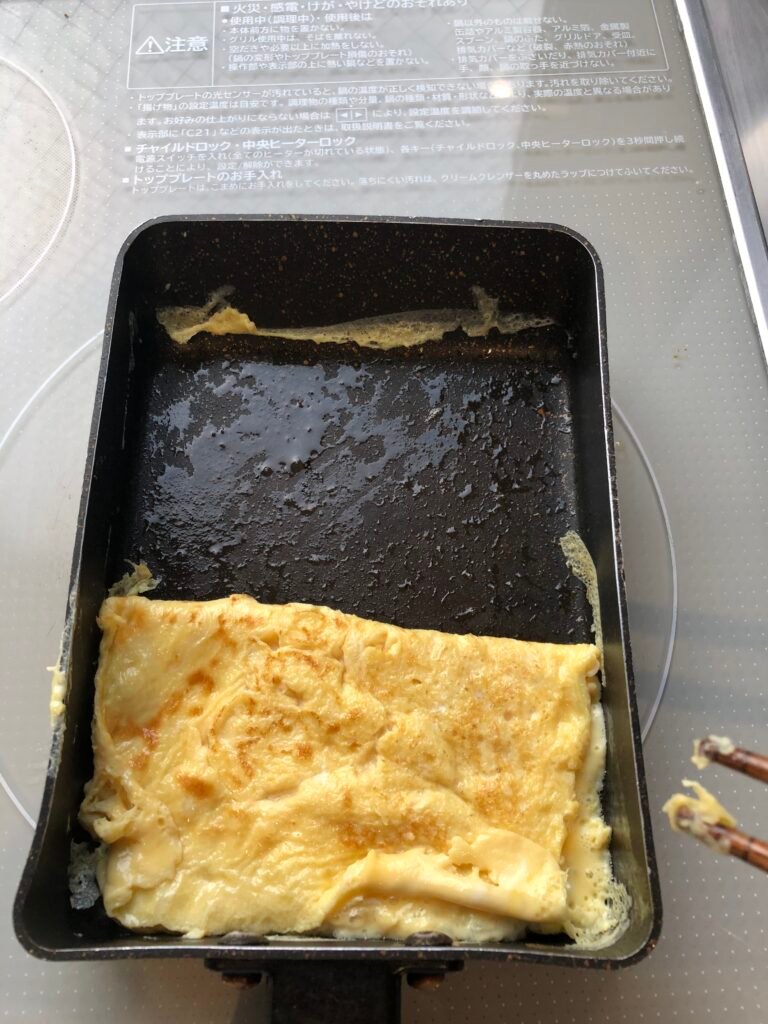
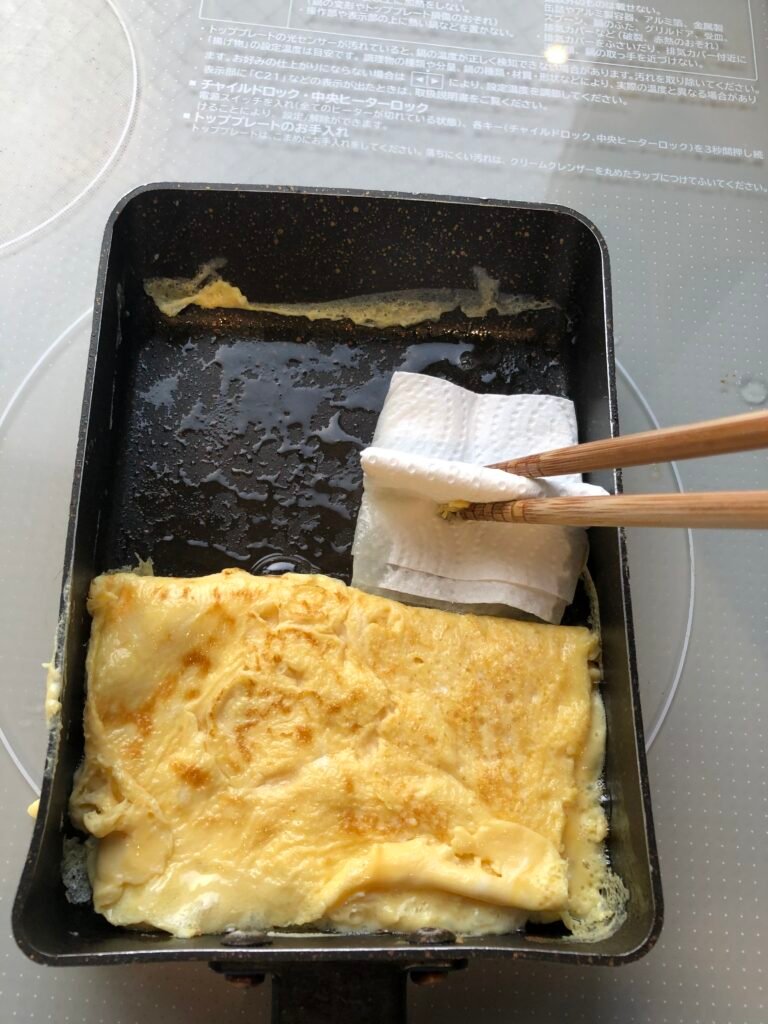
Step 5
Add more whisked eggs and then lift up the omelette so that it can spread underneath. Poke any air bubbles and scrape the sides so that the omelette does not stick to the sides.
Step 6
Roll and repeat till finished! Once you have done your final roll, push the omelette against the sides of the pan to get the straight edges.
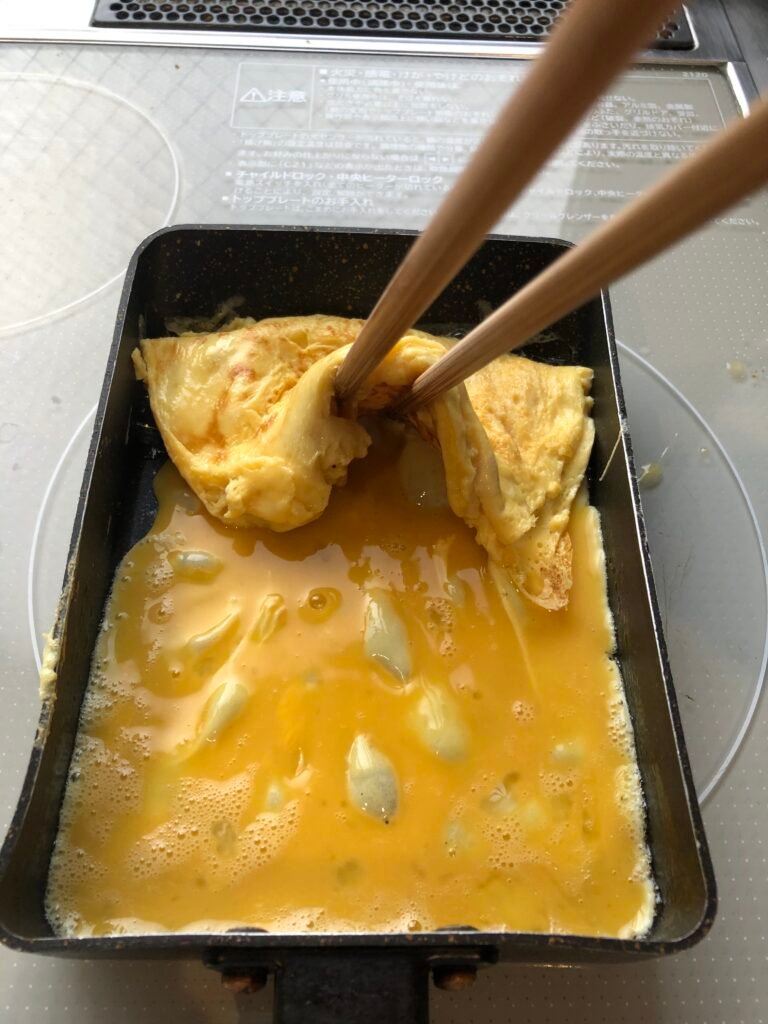
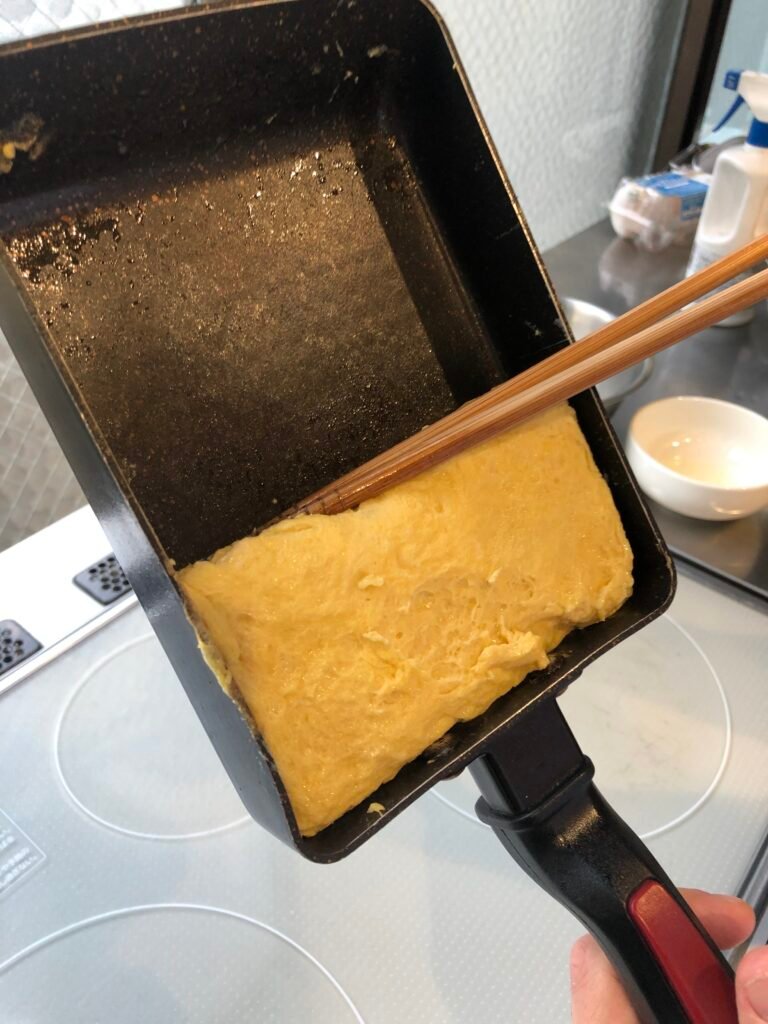
How to make Boiled Prawns
When I was young, I always wondered how to make that butterflied shrimp on top of nigiri sushi. It seemed impossible but it’s actually very simple.
Step 1
First boil a saucepan of water and a bowl with ice water. Hold your shrimp with the tail pointing up. Slowly insert a skewer just under the shell and not into the flesh. This will keep the shrimp straight as it boils.
Step 2
Boil the shrimp for 2/3 minutes and then place into the ice water to stop cooking.
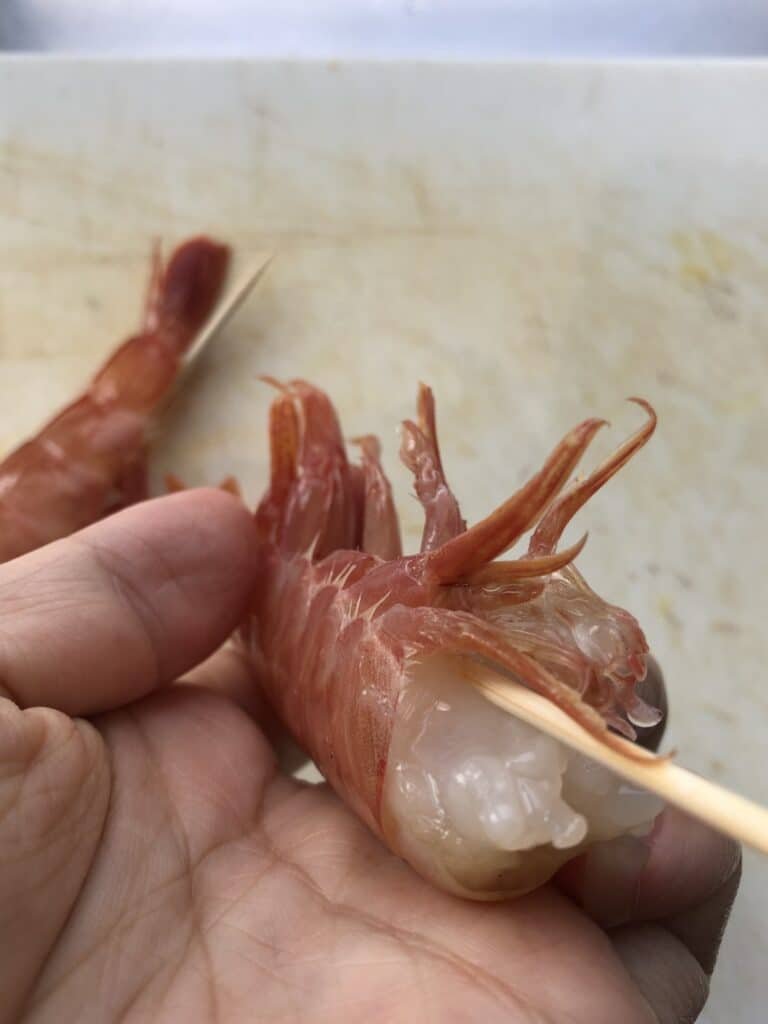
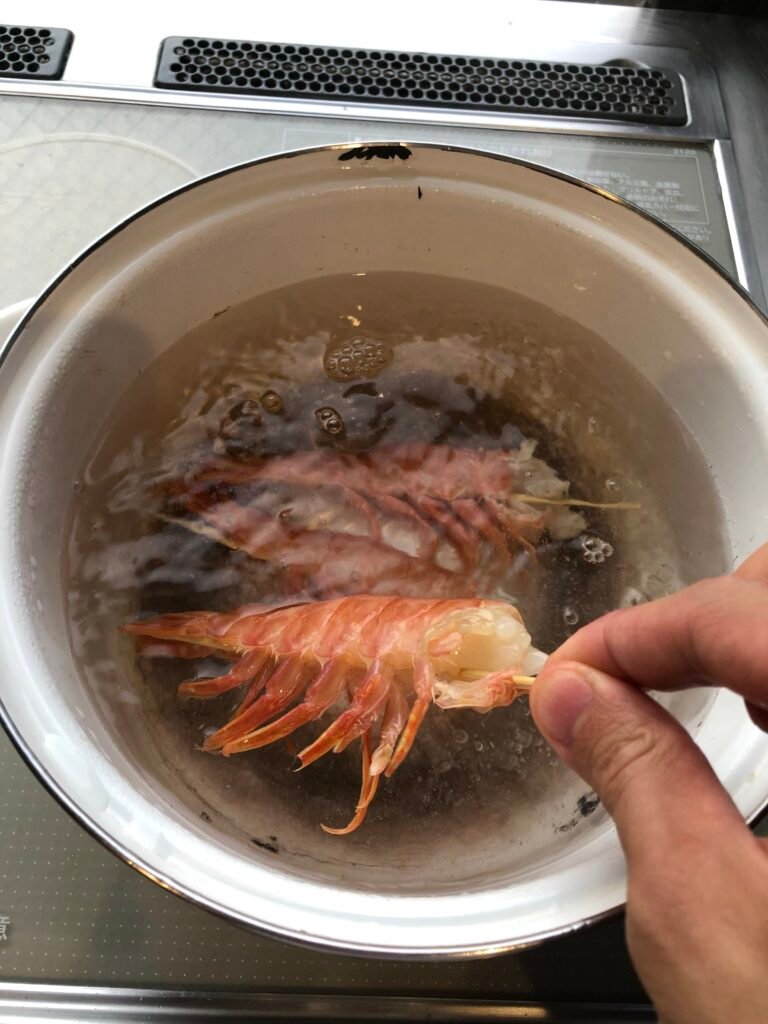
Step 3
Gently remove the skewer and then de-shell the shrimps. Hold the shrimp with the legs point up and use your thumb to run down the belly to take the legs off. Next, hold the tail and remove the shell in one piece to keep the flesh intact.
Step 4
Finally, lay the shrimp with the belly facing up and slice to the other side but not all the way through! This will expose the intestine, which you can then remove by hand. Spread the shrimp out and it should be perfectly butterflied! You can keep it like this or cut off the shell of the tail.
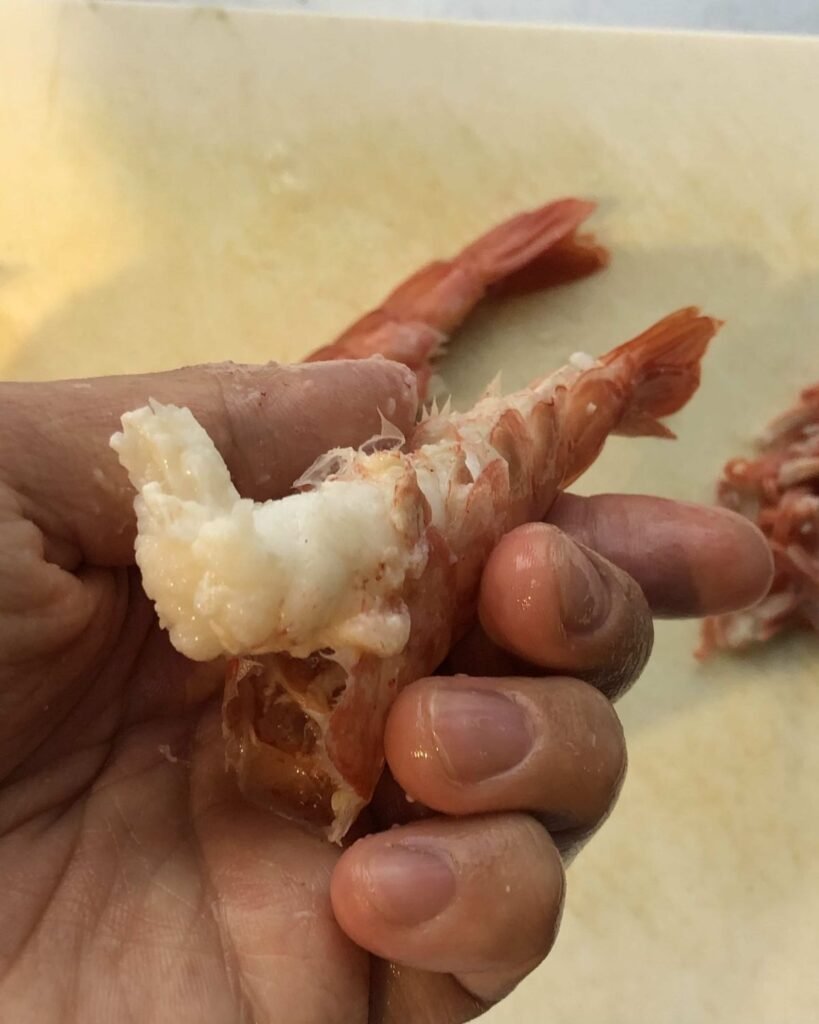
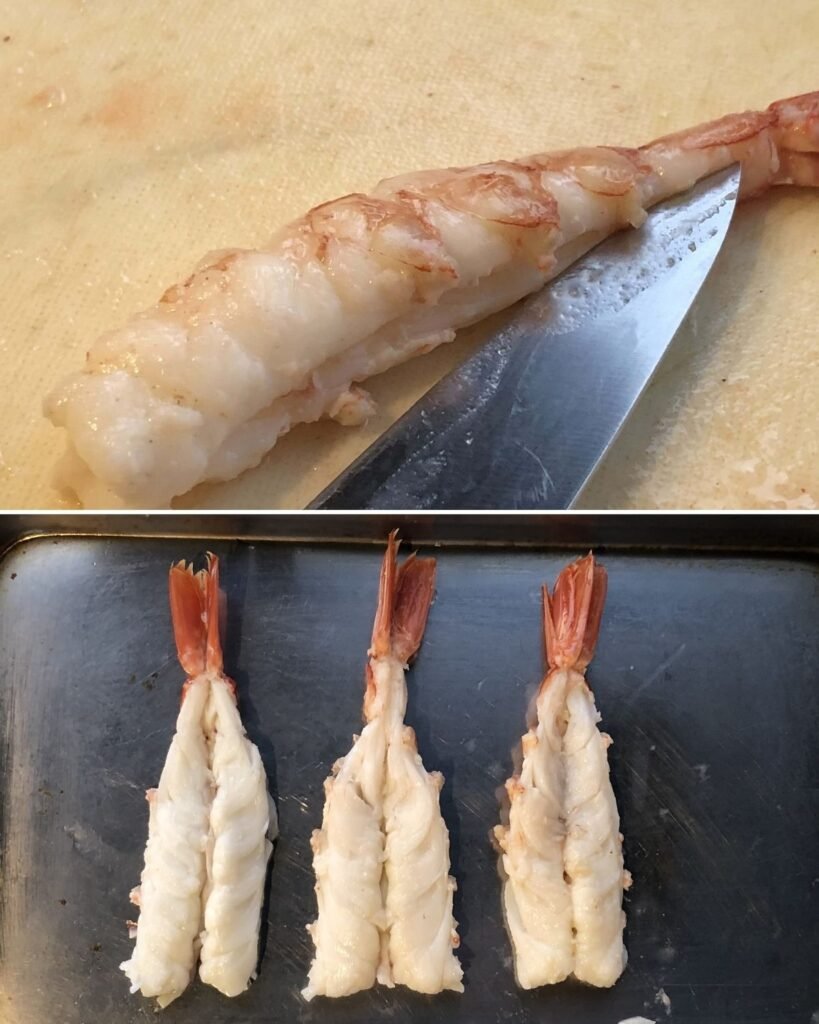
How to make Hakozushi
Most of you probably won’t own an oshibako so I will let you know on a little tip! You can use anything that is square to make your sushi! I used two plastic containers.
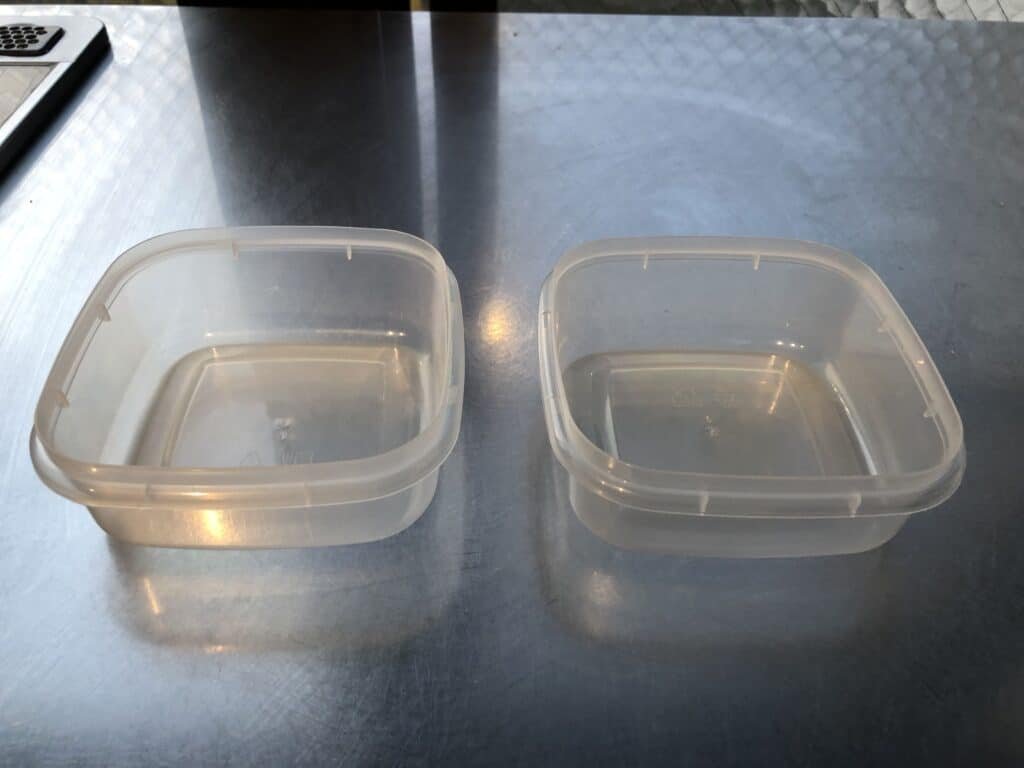
Step 1
Brush the inside of one container with the sushi rice vinegar. Brush the bottom side of the other container. This is so that none of the rice sticks and easy to take out. Cut the toppings to the size of the container you are using. Place inside the container. I cut my tamagoyaki in half so that it was thinner.
Step 2
Next, wet your hands and pick up the sushi rice and place on top of your topping. Push down using the other container till compact.
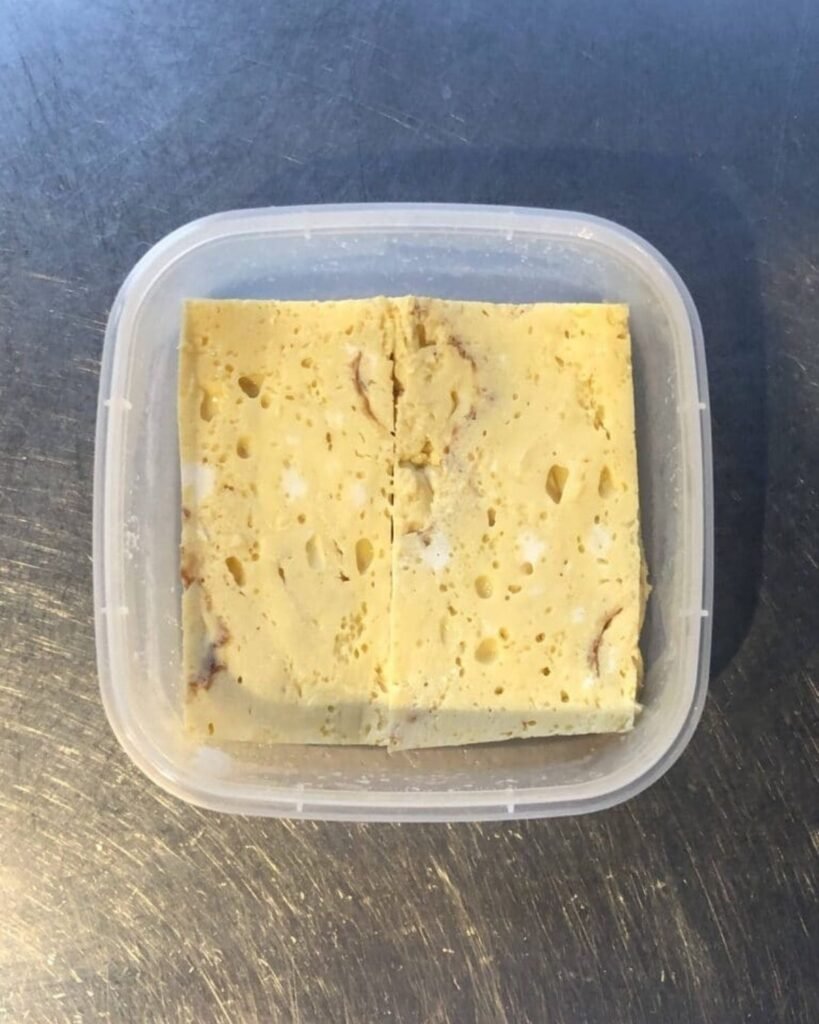
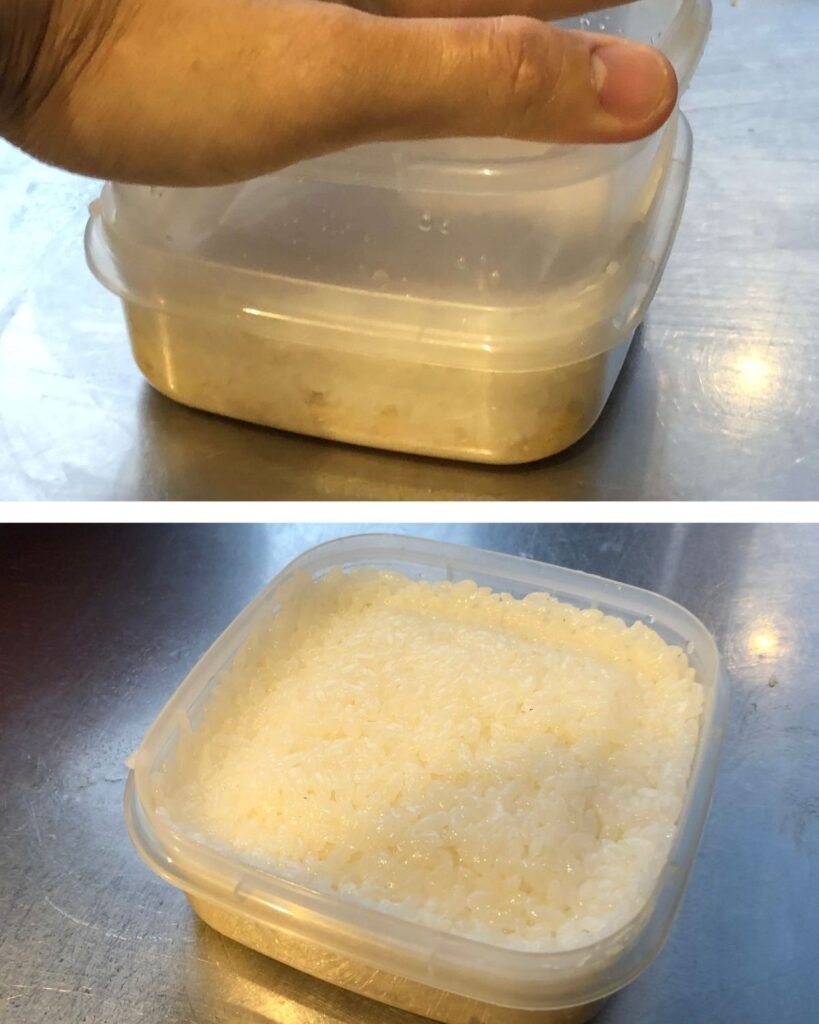
Step 3
Take out and place on a cutting board. My container was not fully square so I had to cut off some of the edges.
Cut into squares and enjoy!
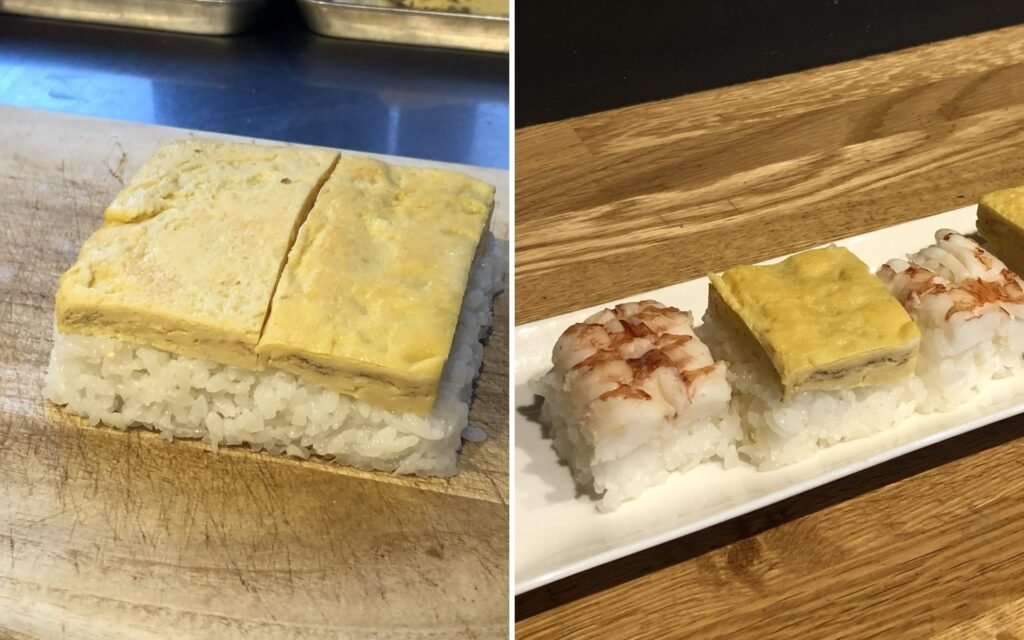
Where to enjoy Hakozushi in Osaka
Hakozushi isn’t the most common food to find in restaurants so you will have to find some specific places to enjoy the Kansai delicacy. Of course the most famous place is Yoshino Zushi, the birth place of hakozushi.
Yoshino Zushi
There are many small sister restaurants but the flagship store is in Osaka, just a 25 minute walk from the station. The traditional tatami floors have been replaced with a sleek, modern set of chairs and tables, with an elegant cypress wood counter in front of the chef. They have different priced set menus where you can enjoy their specialty hakozushi. You can watch the chef artistically prepare your sushi, using seasonal vegetables and fish. Finally, the meal is rounded with a light white miso soup.
On their website, you can order different boxes of hakozushi for your own consumption or as a present. If you want a taste of history, this is the place to go.
Website: www.yoshino-sushi.co.jp
Another popular place is at department stores. These are shopping malls, which can be found in any city. Usually, in the basement floor, there are counters with an array of foods. For instance, tempura, Japanese sweets and gyoza. In some department stores, they will sell hakozushi as it is a common item to give as a present. They come elegantly wrapped and inside, it is like a mosaic of sushi.
Department stores are one of my favourite places to go in Japan. The selection of food is like art and always wets my appetite. Perfectly shaped fruit, art like desserts and mouth watering meals are all on show and is a must go!
Hakozushi is similar to nigiri sushi, however there is more emphasis on the rice. Usually nigiri sushi is served with soy sauce but hakozushi is usually served by itself. There is no hiding, just rice and fish. Therefore, every element must be prepared perfectly and seasoned correctly. If you can find hakozushi in department stores, maybe try and buy one for your journey across Japan! It really is a piece of art and should definitely be enjoyed if you have the chance.





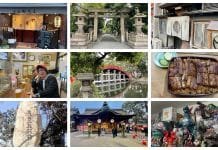

















this was very helpful make more tips so we can make some
This was so helpful thanks for the advice the picture though for the water and rice looks SUS.